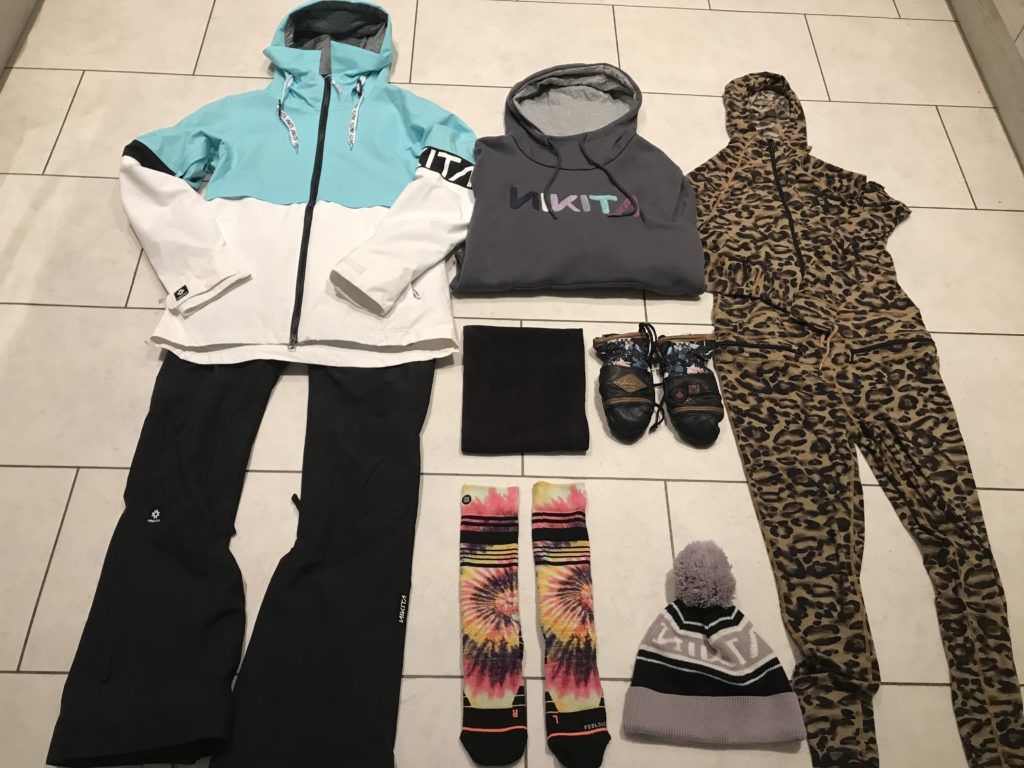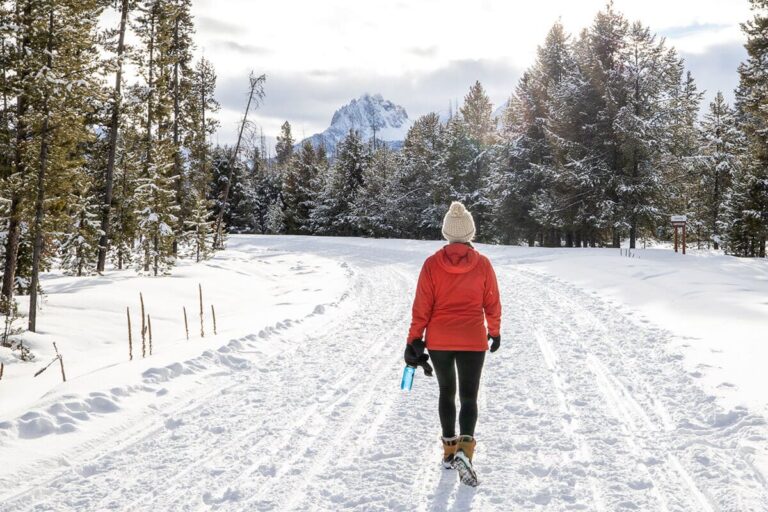To keep warm and comfortable under snow pants, wear moisture-wicking base layers made of merino wool or synthetic materials. These materials will help regulate body temperature and keep you sweat-free during winter activities.
When it comes to braving the chilly winter weather and enjoying snow sports and activities, it is essential to dress appropriately and in layers. While snow pants offer protection from the cold and moisture, it’s equally important to consider what to wear under them for maximum comfort and warmth.
We will explore the best options for clothing to wear under snow pants to keep you cozy and dry while enjoying your winter adventures. By following these tips, you’ll be well-prepared to face the frosty conditions and make the most out of your time in the snow. Let’s dive in and discover the ideal attire to wear under your snow pants.
Understanding The Importance Of Layering
Understanding the Importance of Layering
The science behind layering for cold weather
Layering is a crucial aspect of staying warm and comfortable in snowy conditions. By understanding the science behind it, you can effectively prepare for outdoor adventures in freezing temperatures.
When it is cold outside, your body loses heat rapidly. Layering helps combat this by creating a barrier between your body and the cold. The key is to wear multiple thin layers rather than one thick garment. Each layer serves a specific purpose:
| Base layer | Insulation layer | Outer layer |
|---|---|---|
| Keeps moisture away from your skin and regulates body temperature | Traps body heat to provide insulation | Protects against wind, snow, and moisture |
Layering allows you to adjust your clothing according to the weather conditions or your activity level. Additionally, it provides better mobility compared to a single bulky item. By following this approach, you can stay warm, dry, and comfortable under your snow pants, ensuring an enjoyable experience in the winter wonderland.

Credit: tickettoridegroup.com
Base Layer Options
Choosing the right fabric for your base layer is crucial when it comes to staying warm and dry under your snow pants. There are several moisture-wicking options available that efficiently manage moisture and keep you comfortable throughout your winter activities.
One recommendation for a moisture-wicking base layer is merino wool. It has excellent moisture-regulating properties, keeping you warm even when wet. Another popular option is polyester. Polyester fabrics are quick-drying and great at wicking away sweat from your skin.
Thermal underwear also plays a significant role in layering. It helps trap body heat and creates an insulating barrier between your skin and the snow pants. Look for thermal underwear made from synthetic materials, such as polypropylene or fleece, as they provide excellent warmth and insulation.
Insulating Layer Choices
Insulating Layer Choices:
When it comes to choosing the right insulating layer to wear under snow pants, there are two main options to consider: down and synthetic insulation. Down insulation is highly regarded for its exceptional warmth-to-weight ratio, making it ideal for keeping you warm in colder temperatures. It is lightweight, compressible, and provides excellent warmth without bulk. However, it can lose its insulating properties when wet, making it less suitable for wet or humid conditions.
Synthetic insulation, on the other hand, offers good warmth and maintains its insulating properties even when wet. It is a great choice if you anticipate being in damp or rainy conditions. Synthetic insulation is also more affordable compared to down and is easier to care for as it is machine washable. However, it may be slightly bulkier and heavier than down insulation.
Understanding the warmth-to-weight ratio of insulation is crucial when choosing the right option. This ratio represents how much warmth the insulation provides relative to its weight. Generally, the higher the ratio, the better the insulation.
Mid-layer Options
When it comes to choosing the right mid-layer garment to wear under your snow pants, there are several options to consider. One popular choice is fleece, which offers excellent insulation and moisture-wicking properties. It is lightweight, breathable, and quick-drying, making it ideal for cold weather activities. Another option is wool, which is known for its natural warmth and ability to retain heat even when wet. Wool is also odor-resistant and provides insulation even when it gets damp. Both fleece and wool can be incorporated into your layering system by wearing them over a base layer and under your snow pants. You can also add sweaters and cardigans for extra warmth and versatility. These mid-layer options provide added insulation and allow you to adjust your temperature according to the weather conditions.
Outer Layer Selection
When selecting the outer layer for your cold weather outfit, it is important to consider the function of snow pants in layering. Snow pants serve as a protective barrier against the elements, keeping you warm, dry, and comfortable while enjoying winter activities.
There are several features to consider when choosing snow pants. One important factor is whether to opt for insulated or non-insulated snow pants. Insulated snow pants provide an extra layer of warmth with built-in insulation, while non-insulated pants are more lightweight and suitable for milder weather conditions.
Both types of snow pants have their pros and cons. Insulated pants are perfect for colder climates and offer excellent thermal protection. However, they can feel bulky and restrict movement. Non-insulated pants, on the other hand, offer greater flexibility and are suitable for a wider range of temperatures. However, they may not provide enough warmth in extremely cold conditions. Ultimately, the choice depends on your specific needs and the weather conditions you will be facing.
Maximizing Heat Retention
htmlProper fit and layering order are key elements in maximizing heat retention when wearing snow pants. Ensuring that your snow pants fit snugly without being too tight allows for better insulation and traps body heat effectively. Layering your clothing in the correct order is also crucial in preventing heat loss in extreme temperatures. Start with a moisture-wicking base layer to keep your skin dry, followed by a thermal mid-layer for added warmth. The outer layer should be windproof and waterproof to protect against the elements. Besides proper fit and layering, accessories play a significant role in cold-weather layering. Wear a warm hat, gloves or mittens, and insulated boots to further insulate your body and keep extremities warm. Additionally, consider using hand and foot warmers for extra heat. By following these strategies, you can stay comfortably warm and protected while wearing snow pants in snowy conditions.
Making The Right Footwear Choices
Making the Right Footwear Choices
Selecting appropriate socks for cold weather activities: When it comes to staying warm and comfortable while wearing snow pants, your choice of socks is crucial. Look for socks made of warm and moisture-wicking materials such as merino wool or synthetic blends. These fabrics help to keep your feet dry and insulated, even in the harshest conditions.
Best boots for winter adventures: When selecting boots to pair with your snow pants, opt for insulated and waterproof options. Look for boots with a sturdy sole and ample ankle support, as you’ll be navigating slippery and uneven terrain. Additionally, ensure that your boots have enough room to accommodate your thick winter socks without feeling too tight.
Gaiters and their role in protecting against snow and moisture: Gaiters are an essential accessory to wear with snow pants, especially when venturing into deep snow or wet conditions. These protective coverings wrap around your lower legs and ankles, acting as a barrier against snow, moisture, and debris. Choose gaiters made of waterproof and durable materials to enhance your overall winter protection.
Additional Tips And Considerations
Additional Tips and ConsiderationsChoosing the right glove or mitten is crucial for staying warm in cold temperatures. Look for insulated options with waterproof and windproof materials. Consider the level of activity and temperature you will be in. Thicker gloves are suitable for low-intensity activities, while thinner gloves or mittens are better for high-intensity activities. Don’t forget to check if they have touchscreen compatibility for convenience.
A proper hat is essential for keeping your head warm. Opt for a thermal beanie or a wool hat that covers your ears. For added protection, pair it with a neck gaiter or a scarf to keep cold air from entering.
Layering is key to staying comfortable during different outdoor activities. Start with a moisture-wicking base layer to keep sweat away from your skin. Add a warm mid-layer, such as a fleece or down jacket, for insulation. Finally, top it off with a waterproof and breathable outer layer to protect against snow, wind, and rain.
Frequently Asked Questions Of What To Wear Under Snow Pants
Should I Wear Anything Under My Snow Pants?
Yes, it is recommended to wear a base layer under your snow pants. Base layers provide insulation, moisture-wicking, and comfort. They help regulate body temperature and keep you dry during physical activity. Choose lightweight, breathable materials like synthetic or merino wool for optimum performance.
What To Wear Skiing If You Don’t Have Snow Pants?
If you don’t have snow pants for skiing, wearing waterproof or water-resistant pants is a good alternative. Layering thermal leggings or long underwear underneath can help keep you warm. Consider renting or borrowing snow pants if possible. Additionally, wearing waterproof gloves and a jacket is important to stay dry and protected.
What Do You Wear Under Snow Pants For Hiking?
Wear a moisture-wicking base layer like thermal or synthetic underwear under your snow pants for hiking. It helps manage sweat and keeps you dry.
What Do You Wear Under Columbia Snow Pants?
You can wear thermal leggings or base layer pants under Columbia snow pants for extra warmth and comfort.
Conclusion
To sum up, choosing the right clothing to wear under snow pants is essential for staying warm and comfortable. Layering is key, with moisture-wicking base layers, insulating mid-layers, and waterproof outer layers being optimal choices. Additionally, considering the activity level, weather conditions, and personal preferences will help you make the best decision.
Make sure to prioritize comfort, flexibility, and warmth when selecting your apparel. With the right clothing choices, you can fully enjoy your time in the snow while staying cozy and protected.





